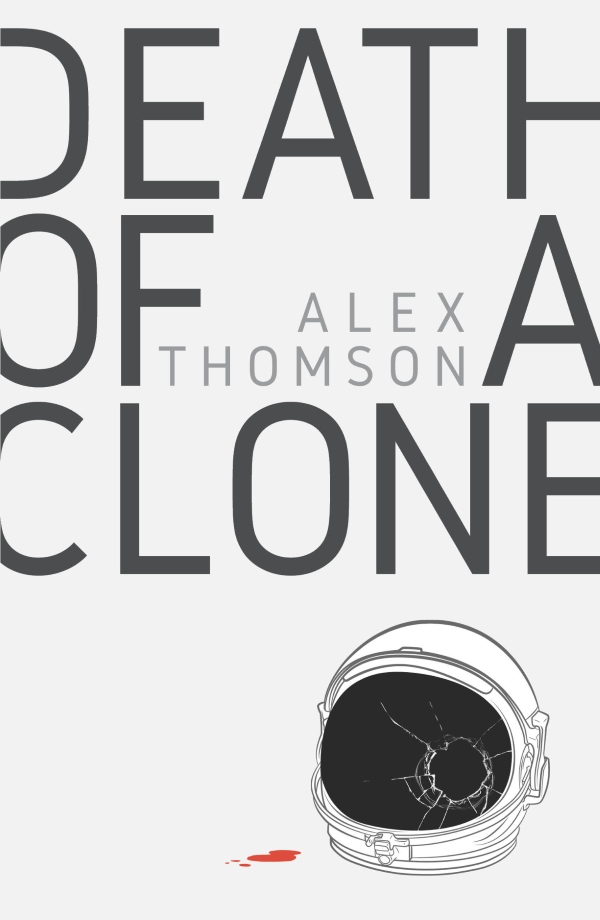As an author, when you attempt to write a genre crossover, you do so with some degree of trepidation. Are you about to create the literary equivalent of the Chindian takeaway, a monstrosity that dilutes two separate culinary delights? For which audience are you primarily writing, fans of genre A or genre B? Why does it even matter? Bookshops and amazon have a lot to answer for here, with their insistence on genre labels and metadata, and as anyone who has worked in publishing will testify, the slightest whiff of a second genre leads to worried discussions about “which shelf will they put it on?” Multiple tags and keywords, sure. But label a book with more than one genre, and alarm bells start ringing. Despite the love of pitching a title as “x meets y (with z)”, the industry still seems reluctant to allow them to splash about in different pools.
Strangely, it seems to be just the world of books that has this problem. Hollywood has never balked at mixing different genres – even to the point of splicing two together to create a new genre: the romantic comedy, so successful that they have overtaken ‘serious’ romantic films in popularity. The 80’s had a particular genius for mash-ups, creating many classic films with a sci-fi premise (Back To The Future, Aliens, Ghostbusters, Blade Runner), that mingled freely with comedy, romance, noir and horror. And it is almost too obvious to point out the number of musical artists who borrow from and are influenced by music beyond their nominal genre.
But in fiction, most agents and publishers tend to prefer their authors to be in one camp or the other. This tradition goes back to John W Campbell, Isaac Asimov’s editor, who famously claimed sci-fi mysteries were a contradiction in terms, because technology would make the art of detection redundant. Asimov took up the challenge, and wrote The Caves Of Steel, a superior murder mystery that proved Campbell was mistaken. Almost by accident, the novel also manages to be one of the first outings for the “buddy cop” trope, as the robot-phobic Elijah Baley is forced to work with R. Daneel Olivaw (a robot). Needless to say, hilarity ensues, with Elijah convi nced his partner is the killer – before working out the solution and learning to respect his robot pals.
Crime and sci-fi do seem to be well matched (I should declare an interest; it is the genres I chose to blend when writing Death Of A Clone, a murder mystery set on a mining asteroid). Perhaps it is something to do with the plot device whereby the detective character can explore a new world and question the suspects, giving the author an opportunity to world-build without resorting to info dumping. Unlike other examples of literary mash-ups, you can find several successful examples of the SF mystery: the chilling Altered Carbon ended up as a Netflix series this year; China Miéville’s The City And The City won just about every award going; and Chasm City and The Prefect are many fans’ favourites from Alastair Reynolds’ blockbusting Revelation Space universe. Throw in a third genre to the mix – the SF comedy mystery – and you can still find titles as brilliant as Dirk Gently’s Holistic Detective Agency or The Eyre Affair. Even today, the SF mystery sub-genre is going strong, with Mur Lafferty’s Six Wakes (a superb locked-room set-up, with clones awakening on a spaceship to investigate their previous incarnations’ murders), being nominated for the Hugo Award this year.
Writing cross-genre has its challenges, and I suspect most authors do it without intending to – starting with a premise and then finding yourself dragged towards another genre. The biggest danger is that you just dip into both without fully exploring them – you have to be hyper-vigilant of the genres’ tropes and clichés. The ideal is that you manage to intertwine both strands like a plait, so that both genres complement and play off each other. Philip K Dick managed this brilliantly with his short story The Minority Report, in which the sci-fi element (pre-cogs predicting crimes) is integral to the crime element. Above all, you do not want to insult your readers by letting them think the mash-up is a kooky selling point, (why not turn my zombie thriller into a romance?), or is YA because it is on trend.
In general, I would argue the literary world needs more mash-ups, if only to introduce readers to genres they might otherwise be sniffy about. I always had an irrational distrust of the Western genre, but it sneaked under my radar when I was reading Brandon Sanderson’s second Mistborn trilogy (the “Wax and Wayne” titles) – as soon as I had finished, I went out to discover some classic Westerns. One mash-up that is particularly under-represented is the SF and fantasy comedy. Sure, we had Terry Pratchett and Douglas Adams, but since then nobody has really come close to producing genuine belly-laughs. Perhaps they cast too long a shadow, and authors are wary of the inevitable comparisons. Another reminder that creativity should be embraced, rather than constantly categorised and put into boxes. After all, there are few things more exhilarating than reading a book that is completely sui generis, such as Ghostwritten or American Gods. As is so often the case, Alan Moore puts it better than anyone: “Life isn’t divided into genres. It’s a horrifying, romantic, tragic, comical, science-fiction cowboy detective novel. You know, with a bit of pornography if you’re lucky.”
Death Of A Clone by Alex Thomson is available now from Abbadon and you can buy it here.

